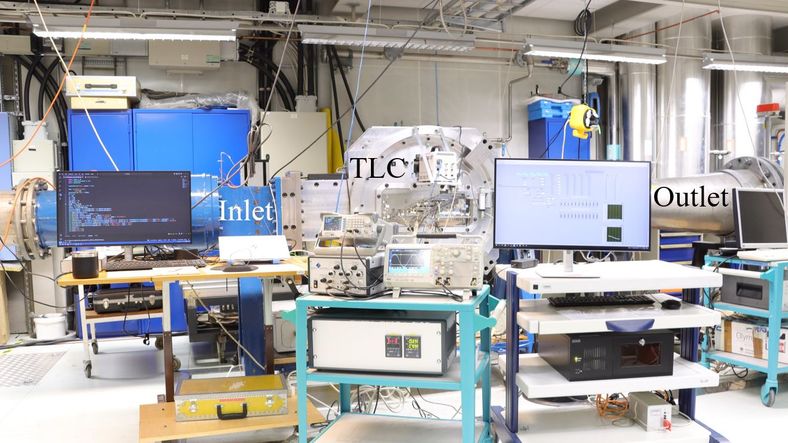Carlos Tavera Guerrero
About me
I am part of the Turbomachinery and Propulsion group in the Heat and Power Technology division. In 2019, my main focus was the mechanical design of a transonic linear cascade (TLC) for future investigations within two projects. The first is a European-funded project, H2020 Advanced Research into Aeromechanical Solutions (ARIAS), and the second is a national Swedish project funded by the National Aeronautical Research Program (NFFP).
To achieve the 2050 net-zero goal, the aerospace sector is working on multiple paths to attain the objective. A critical path is to research new technologies, and my research aims to contribute to this path at a low TRL level. Since 2020, I have been working as a PhD candidate on a national Swedish project entitled ADiSS (Aeroelastisk Dämpning i SepareradStrömning). This project investigates the effect of separated flows and erosion mechanisms (surface roughness and leading edge erosion) on the aeroelastic response numerically and experimentally. This project collaborates with GKN Aerospace Sweden AB as an industrial partner. The reference geometry and operating point are taken from an open-source transonic axial compressor (VINK). The experimental campaign is performed at the Transonic Linear Cascade (TLC) with prismatic blades representative of VINK at the part-speed operating points. Similarly, I have developed a numerical model that is a one-to-one representation of the experimental setup where numerical data is compared to experimental results.
The figure below shows the overview of the TLC, where steady-state measurements are performed via static probes, five-hole probes, Laser-to-Focus anemometer (L2F), and Pressure Sensitive Paint (PSP). The aeroelastic response is measured under a controlled excitation ranging from 200 Hz to 2500 Hz via piezo-electric actuators, miniature fast-pressure transducers, and laser vibrometers.

Research in a conceptual nutshell:
Why is the leaf oscillating while others are standing still?
The airflow excites the leaf producing a harmonic motion. While the leaf vibrates, the air can either extract or add energy to the leaf's kinetic energy. Usually, the air dissipates the oscillation until it stands still. Still, in this case, the air gives energy to the leaf, increasing its vibration amplitude at each period (negative aerodynamic damping). For a second, replace the leaf with a titanium fan blade sitting in an aeroengine; if this phenomenon takes place, it can jeopardize the structural integrity of the component and the engine. Therefore it is highly relevant to understand this phenomenon at challenging operating points.
Background:
I obtained my BSc in Aeronautics from Instituto Politecnico Nacional in Mexico. Afterward, I worked for three years as a CAD Engineer at Ford Motor Company, where I was the team lead of the rear bumper system. Afterwards, my passion for turbomachinery took me to pursue an MSc in a joint Master's program in Turbomachinery Aeromechanical University Training (THRUST).
At KTH:
During this time, I have supervised several theses (BSc and MSc) relevant to the project.
Besides my research, I am a teaching assistant in the numerical heat transfer in energy technology and aircraft propulsion general courses.
I give lectures and hold Q&A sessions at the Aeromechanics Project Course in collaboration with TUD Darmstadt, Universidad Politecnica de Madrid (UPM), and Imperial College London (ICL).
Courses
AI applications in Sustainable Energy Engineering (MJ2507), assistant
Aircraft Propulsion, General Course (MJ2523), assistant
Numerical Heat Transfer in Energy Technology (FMJ3411), teacher